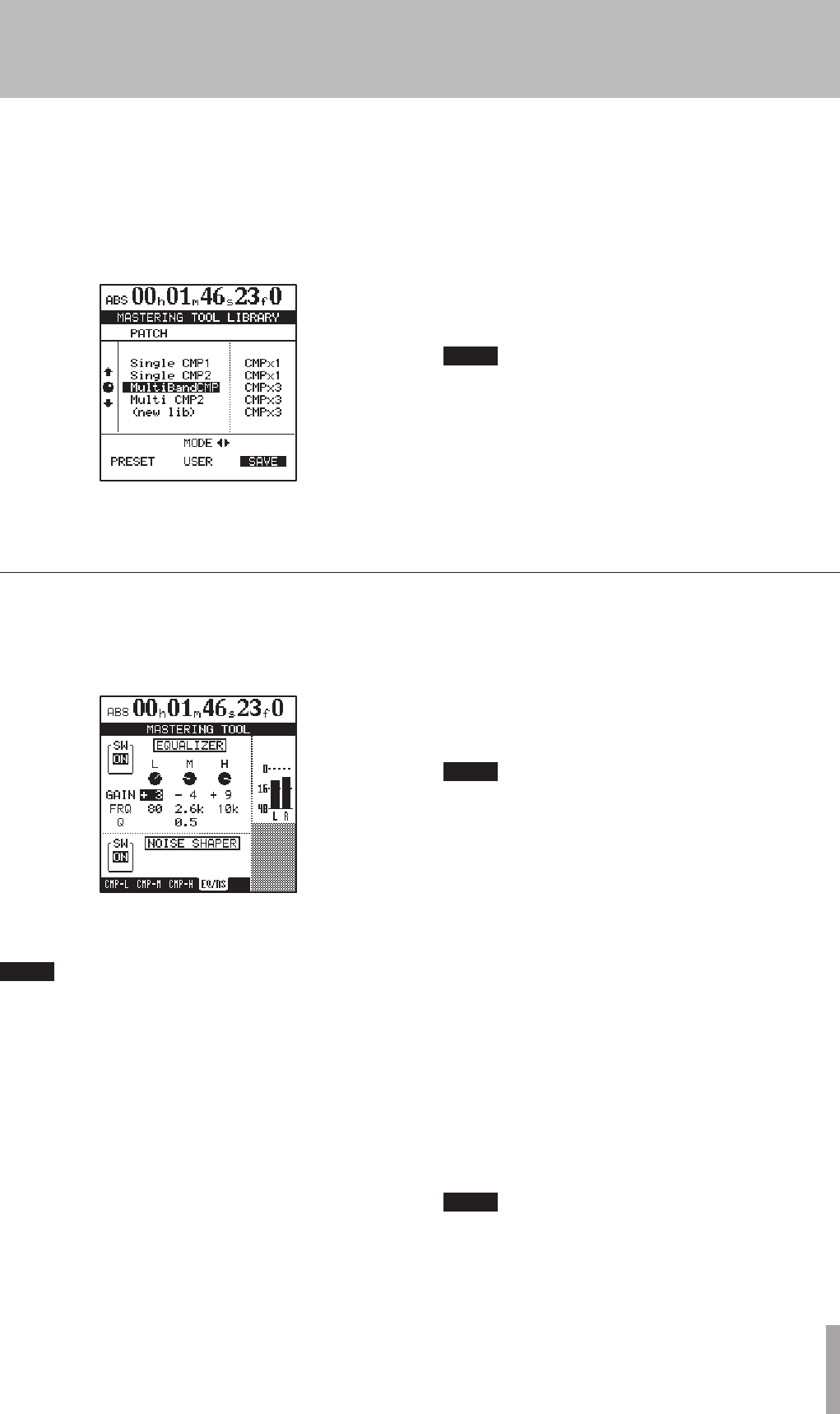
TASCAM 2488neo 73
8 − Mastering and CD recorder
Saving compressor settings
ª
Use the following procedures to save mastering tool com-
pressor settings as a user patch.
1 With the compressor screen open, press the YES/
ENTER key to open the MASTERING TOOL
LIBRARY screen.
2 Use the > cursor key to select SAVE.
3 Use the JOG/DATA dial to select the save destina-
tion.
If you select an existing library patch, it will be
overwritten by the new data.
Select (new lib) to save a new patch in the library
data without overwriting another patch.
4 Press the YES/ENTER key to save the patch in the
library and return to the MASTERING TOOL
screen (compressor screen).
NOTE
If you press the NO/EXIT key instead of the YES/ENTER
key, the MASTERING TOOL screen (compressor screen)
will reopen without saving a patch.
You can give the patch a name (see “Titling” on page
15).
1 When the MASTERING TOOL screen is open,
press the Á cursor key to select the EQ/NS tab and
open the EQ/noise shaper screen.
2 Use the cursor keys and JOG/DATA dial to select
parameters and adjust them.
NOTE
When the cursor is on the SW item of the EQUAL-
IZER or the NOISE SHAPER, pressing the Ó cursor key
switches to the compressor screen.
Settings the EQ
ª
The parameters and setting ranges of the mastering 3-band
EQ are the same as for the channel EQ. The low band (L)
and high band (H) are shelving type bands that have GAIN
and FRQ (roll-off frequency) parameters that can be set.
The mid band (M) is a bell type band with GAIN FRQ
(center frequency) and Q (band width–see note below)
parameters that can be set.
SW: Switch that turns EQ ON and OFF
GAIN: Amount gain is cut or boost ± 12dB
FREQ: Frequency in the following ranges
L: 32 Hz – 1.6 kHz
M: 32 Hz – 18 kHz
H: 1.7 kHz – 18 kHz
Q (only MID): 0.25 – 16
NOTE
Q is a value found by dividing the center EQ frequen-
cy by the bandwidth. The higher the Q value is the
smaller the range of the cut/boost effect.
Noise shaper
ª
Audio CDs use 16-bit quantization, so the master track
data is automatically converted to 16-bit.
Ordinarily, bit conversion results in a very low level of
quantization distortion at points where sound is removed.
By turning the noise shaper ON, this quantization distor-
tion can be reduced.
The noise shaper in this unit uses a dithering technique that
adds random noise below the quantization steps to reduce
quantization distortion.
Noise shaper setting
ª
The noise shaper can be turned ON and OFF using the SW
item at the bottom left of the screen.
NOTE
EQ and noise shaper settings cannot be saved in the
library.
Using the mastering EQ/noise shaper


















